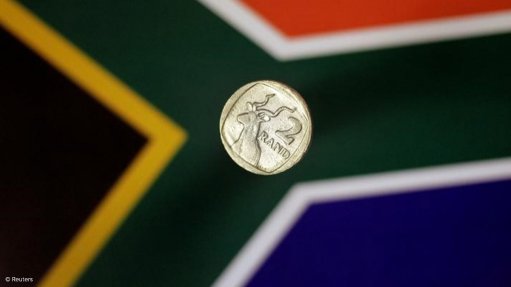To make you laugh
The other day I logged onto the Council for Scientific and Industrial Research’s (CSIR’s) energy centre and read a paper. The paper is about wind and solar energy.
It states: “A second independent study by the CSIR found that renewable energy from South Africa’s first wind and solar (photovoltaic, or PV) projects created R4-billion more [in] financial benefits to the country than they cost during the first six months of 2015.”
How? Well, apparently: “The first benefit, derived from diesel and coal fuel cost savings, is pinned at R3.6-billion. This is because 2.0 TWh of wind and solar energy replaced the electricity that would otherwise have been generated from diesel and coal (1.5 TWh from diesel-fired open-cycle gas turbines and 0.5 TWh from coal power stations.”
Well, let us just accept this. But doesn’t Eskom have to pay for this power? Yes, apparently: “These direct cash savings on fuel spending to Eskom . . . are countered by the tariff payments to the independent power producers of the first wind and PV projects. They amounted to R4.3-billion from January to June 2015.”
Got that? Eskom saved R3.6-billion in fuel costs, but had to pay out R4.3-billion for renewable energy. So, it would have benefited Eskom to the tune of R700-million if it had not used renewable energy. But, no! According to the CSIR: “The second benefit is the saving of R4.6-billion to the economy derived from 203 hours of so-called ‘unserved energy’ that was avoided, thanks to the contribution of the wind and solar projects”.
You do not need a degree in economics to realise that, if you were a dispatch controller at Eskom, you would rather spend the R3.6-billion on fuel than R4.6-million on renewable energy.
According to the National Energy Regulator of South Africa (Nersa), apparently, ‘unserved energy’ is energy not supplied owing to an unplanned outage of short duration. Nersa says it is worth R75/kWh (in 2010 money terms) and others say it is R100/kWh (in 2015 money terms). But, as they say, I think I have a problem. It is this: 2 TWh is 2 000 000 000 kWh, and R4.6-billion is R4 600 000-million (in South Africa, anyway), which is R4 600 000 000 000. Dividing the rand by the kilowatt hour, then, apparently, the CSIR values ‘unserved energy’ at R2 300/kWh. On the other hand, if we use the US definition of a billion as being a thousand million, then the CSIR values ‘unserved energy’ at R2.3/kWh. Neither can be correct.
This unserved energy concept seems like something that has been dredged out of the nimble brain that concluded that paying farmers a sum of money every month not to grow potatoes was a great economic idea. But what about the times when wind was not needed at all and Eskom had no option but to accept the wind power and turn down the far more economical power available from coal? Does the wind power then have a negative effect on the economy?
It seems to me that the CSIR, far from looking at the matter of renewable energy in a scientific way, is giving unfair credence to wind power. German-born Dr Tobias Bischof-Niemz, who heads up the CSIR’s Energy Centre, explains: “The study was based on actual hourly production data for the different supply categories of the South African power system (such as coal, diesel, wind and PV). We have developed a methodology at the CSIR Energy Centre to determine whether, at any given hour of the year, renewables have replaced coal or diesel generators or whether they have even prevented so-called ‘unserved energy’’’.
I still do not get it. We all know diesel generation is expensive. We all know coal generation is cheaper than wind. Why would we want to replace coal generation? Out there, some deeply misguided people believe that, one day, the whole of South Africa will run on renewable energy. Dream on. Not in the middle of a windless night – it won’t and no amount of lily pond hopping using esoteric definitions is going to change that.
Comments
Announcements
What's On
Subscribe to improve your user experience...
Option 1 (equivalent of R125 a month):
Receive a weekly copy of Creamer Media's Engineering News & Mining Weekly magazine
(print copy for those in South Africa and e-magazine for those outside of South Africa)
Receive daily email newsletters
Access to full search results
Access archive of magazine back copies
Access to Projects in Progress
Access to ONE Research Report of your choice in PDF format
Option 2 (equivalent of R375 a month):
All benefits from Option 1
PLUS
Access to Creamer Media's Research Channel Africa for ALL Research Reports, in PDF format, on various industrial and mining sectors
including Electricity; Water; Energy Transition; Hydrogen; Roads, Rail and Ports; Coal; Gold; Platinum; Battery Metals; etc.
Already a subscriber?
Forgotten your password?
Receive weekly copy of Creamer Media's Engineering News & Mining Weekly magazine (print copy for those in South Africa and e-magazine for those outside of South Africa)
➕
Recieve daily email newsletters
➕
Access to full search results
➕
Access archive of magazine back copies
➕
Access to Projects in Progress
➕
Access to ONE Research Report of your choice in PDF format
RESEARCH CHANNEL AFRICA
R4500 (equivalent of R375 a month)
SUBSCRIBEAll benefits from Option 1
➕
Access to Creamer Media's Research Channel Africa for ALL Research Reports on various industrial and mining sectors, in PDF format, including on:
Electricity
➕
Water
➕
Energy Transition
➕
Hydrogen
➕
Roads, Rail and Ports
➕
Coal
➕
Gold
➕
Platinum
➕
Battery Metals
➕
etc.
Receive all benefits from Option 1 or Option 2 delivered to numerous people at your company
➕
Multiple User names and Passwords for simultaneous log-ins
➕
Intranet integration access to all in your organisation


















